Ijraset Journal For Research in Applied Science and Engineering Technology
- Home / Ijraset
- On This Page
- Abstract
- Introduction
- Conclusion
- References
- Copyright
A Review on Yusha-an Ayurveda Soup with Remarkable Therapeutic Properties
Authors: Pradeep S Kaushik, Kannamedi Arun Sharma, Jayashree N S
DOI Link: https://doi.org/10.22214/ijraset.2024.65525
Certificate: View Certificate
Abstract
The recent view of health is not just an absence of illness but is defined as an overall wellness of the body and mind. This was much earlier conceptualised by the ancient Indian traditional systems of medicine like Ayurveda. The state of body equilibrium can be achieved by proper diet and sadvritta which means good practices. In Ayurveda, the role of diet has been explained by Ahara kalpana and one of the important forms of it is Yusha. Yusha is a soup form of preparation made of cooked pulses and various herbs in different proportions. Various types of Yusha have been known for their multiple health benefits, both preventive and therapeutic. The components of Yusha have been known for their therapeutic benefits and has been proved by modern scientific research. Nowadays, as there is an increase in the incidence of lifestyle disorders, it is quite significant to understand and implement the use of Yusha as a component of diet therapy. This review attempts in introducing Yusha, its classification, methods of preparation and therapeutic benefits.
Introduction
I. INTRODUCTION
One of the effective ancient medical systems with a long history that has endured till today is Ayurveda. The cornerstone for comprehending human health is the study of Ayurveda, which investigates the complex knowledge of natural treatments and the relationship between the basic elements of nature and the makeup of the human body. There are numerous aspects of Ayurveda that scholars, practitioners, and other experts in the subject must uncover in order to preserve traditional systems of medicine (TSMs) and perpetuate further development in popularizing.[1],[2]
A. Relevance of Ayurveda in today’s health situation
Humanity still faces a number of health problems despite tremendous scientific and technological advancements, mostly due to poor eating and lifestyle choices. The science of life, Ayurveda, establishes all the preventative guidelines that are critical in maintaining good health. In Ayurveda, the three pillars of life described are brahmacharya (celibacy), nidra (sleep), and ahara (diet)[3]. Among these, food, or Ahara, has a significant impact on people's general health. The eating habits of humans have changed greatly in the modern world, and traditional meals have frequently been disregarded or discarded entirely.The most crucial factor is nutrition because a healthy, balanced diet provides all of the body's components, including dosha(The biological intelligence within the body responsible for all physiological and psychological processes)and dhatu(basic structural and nutritional body factor that supports or nourishes the seven body tissues. These seven tissues of our body includes the rasa, rakta, mamsa, meda, asthi, majja and shukra). Since all of the body's components—dosha, dhatu, and mala(excreta)—are created from a healthy, balanced diet, nutrition is the most crucial factor. In addition to being vital for our bodily health, food also nourishes our minds. According to the Upanishads, in the food we eat is a subtle part that feeds the mind, while the larger part is transformed into flesh. It is also mentioned that the water we drink is separated into three sections, majority turns into urine, the middle portion turns into blood, and the smaller portion feeds our prana, or life force.[4]
Because of its deep understanding of nature and the rhythms and cycles that govern all life on earth, Ayurveda scripts provide a wealth of knowledge. This information is useful, simple to comprehend, and appropriate for anyone who wants to enhance their mental, emotional, and spiritual well-being. To address the various facets of life, it will incorporate Dinacharya(daily routine), Ritucharya(seasonal routine), Swasthavritta(healthy practices), Sadvritta(good habits), Aharavidhi(eating methodology), and Rasayana(rejuvenation)[5].
Ayurveda's primary goal is not just cure illnesses but also to promote and maintain the health of healthy individuals. The ahara, one of the three pillars of life according to Ayurveda, is a vital aspect of existence. Millions of youngsters are found to follow poor eating habits leading to nutritional deficiency, despite the numerous technological, cultural, and social advancements of the past few decades. Malnutrition is more than just not eating enough food; we also need to recognise that it refers to not eating the appropriate nourishing foods. The term "nutrient" is used to refer to particular dietary components, such as proteins, carbohydrates, etc., according to modern research. But according to Ayurveda, a lot of things are taken into account, such as Charaka's description of nitya sevaniya ahara(Foods consumed on daily basis), Kaiyadeva Nighantu's krutanna kalpana (cooked dishes) as pathya kalpana, and many more.[6]
B. Types of Ayurvedic food Preparations
In therapeutics, Ahara Kalpana is mainly used in 3 ways – Samsarjana, Shodhana and Shamana(Fig.1)
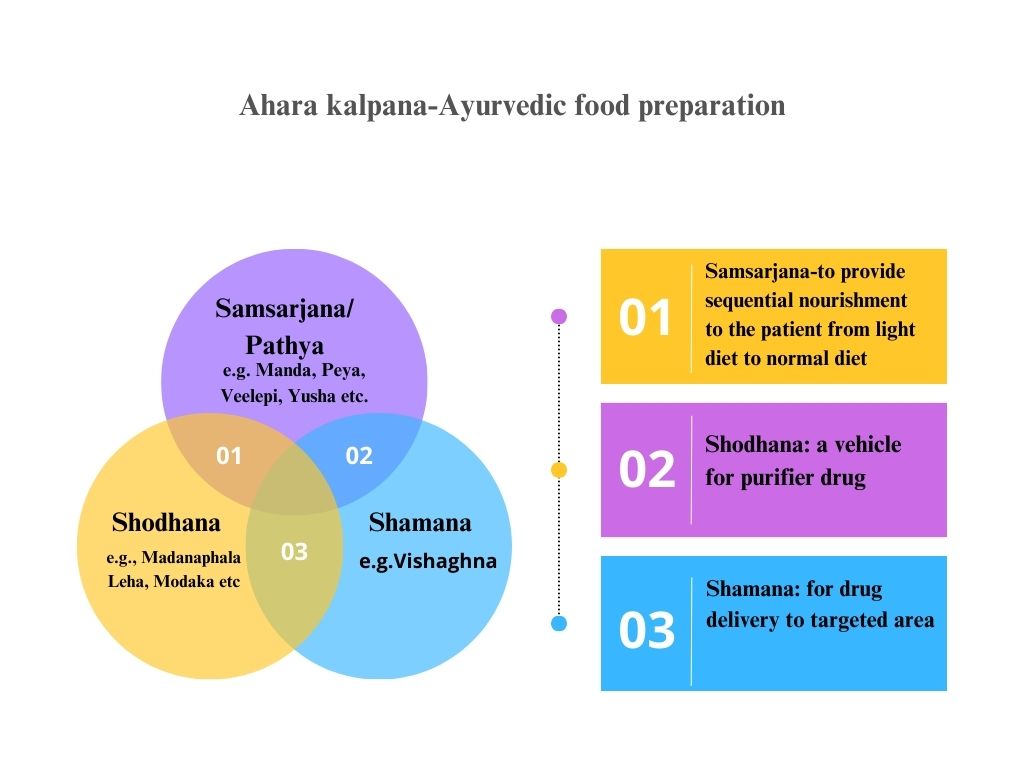 Fig. 1 – Ahara kalpana- Forms of Ayurvedic food preparations
Fig. 1 – Ahara kalpana- Forms of Ayurvedic food preparations
Aahara Kalpana is utilised in Samsarjana Krama of Panchakarma as paschat karma to increase the internal fire of digestion, or Jatharagni, and to return to a healthy state following bodily cleaning. Kritanna Varga is a collection of food preparations, and the Dravyas are suited for the human body when Kalpana is used in conjunction with other factors. It is impossible to use the Aahara Vargas, such as Shaka (vegetables), Mamsa (meat), Shami Dhanya (legumes), and Shooka Dhanya (cereal grains), without using Kalpana. In order to understand the many Kalpanas created by Dravyas of other Aahara Vargas, Kritanna Vargas have been extensively documented in all ancient writings. Stated differently, Kritanna Varga and Ahara Kalpana are aspects of the mentioned Aahara Vargas that are applied. It includes prepared dishes, techniques for making several cuisine types, including Manda, Peya, Yavagu, Anna, Vilepi, Yusha, Krisara, Sattu (the flour of roasted paddy or lentils), etc., along with their preparation techniques and characteristics. [7]
C. Formulation and Properties of different Aahara Kalpana
With just two ingredients—rice and water—the first five formulations—Manda, Peya, Yavagu, Anna, and Vilepi—are restored. Here, variations in the ratio of rice to water lead to variations in the created formulations' consistencies and characteristics.[8]
TABLE I
Preparatory formulation methods of different Ahara kalpana
|
Formulation |
Ratio of cereal/pulse : water |
Preparation method and final consistency |
|
Manda |
1:14(Rice: water) |
Rice is completely cooked and only supernatant liquid is used |
|
Peya |
1:14(Rice: water) |
Rice is completely cooked, solid rice and liquids are taken in equal proportion. |
|
Yavagu |
1:06(Rice: water) |
Rice is completely cooked and only solid rice part is considered. |
|
Anna/Odan |
1:05(Rice: water) |
Rice is completely cooked and only solid rice part is considered. |
|
Vilepi |
1:04(Rice: water) |
Rice is completely cooked and maximum solid portion with little liquid is taken. |
|
Krisara |
1:06(Rice+Mudga: water) |
Rice and Mudga( is completely cooked and only solid rice and Mudga part is considered. |
|
Yusha |
1:16 (Mudga:water) |
Mudga is completely cooked and maximum liquid with little solid is considered. |
|
Mamsarasa |
1:04(Meat and water) |
Meat is completely cooked and maximum liquid with little solid is considered. |
Yusha is prepared by using Mudga(pulses) and water and this is one of the most important formulations of Ahara kalpana according to Ayurvedic texts.
II. YUSHA- CHARACTERISTIC FEATURES
Yusha is a term used to describe liquefaction and metabolization, which aids in the liquefaction of meals. Yusha is a material that is made mostly with pulses and other components together with liquids, while gruel, also known as Yavagu, is cooked with rice. Aruchi Karaka(taste enhancer), Deepana(appetiser),Swariya(Voice improving), Varnya, Agnivardhaka(increases digestive fire), Sweda Vardhaka (Diaphoratic), Thushti, Pushti, Sukhakara, Snigdha, and Ushana are some of Yusha's characteristics. Samskara yukta yusha is used for Kaphaja vikara, rasa yusha for Pittaja vikara, kinchit ushna, snigdha, Kashaya, and yusha for Vataja vyadhi. According to numerous sources, it is employed in paka karma (cooking methods), Dravikaran (liquidation), and adding nourishment.[9]
Classification of Yusha
Yusha is fundamentally of a liquid nature, often with a soup-like consistency. Despite the widespread use of pulses like mudga and kulattha, there are several differences in the method in which Yusha is prepared and utilised. According to diverse criteria, such as the substances employed, the kind of preparation, the medicinal purpose, etc., Yusha has been categorised differently in the numerous Ayurvedic books and records. Figures 2- 5 represent different classifications of Yusha.
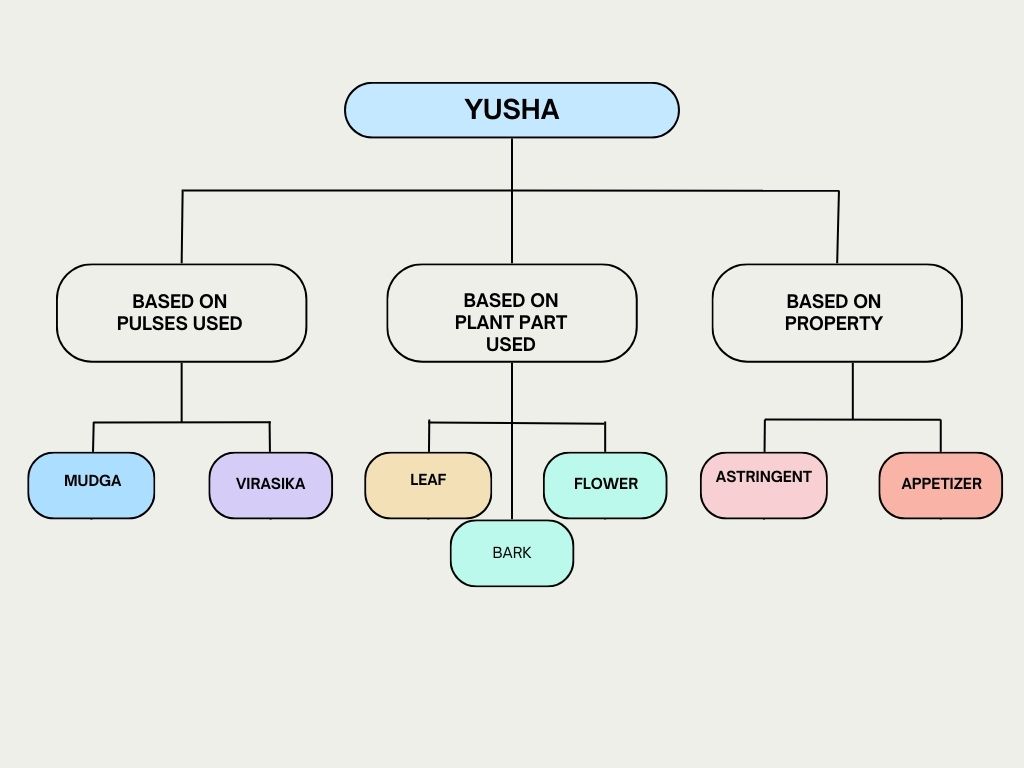
Fig. 2 – General classification of Yusha
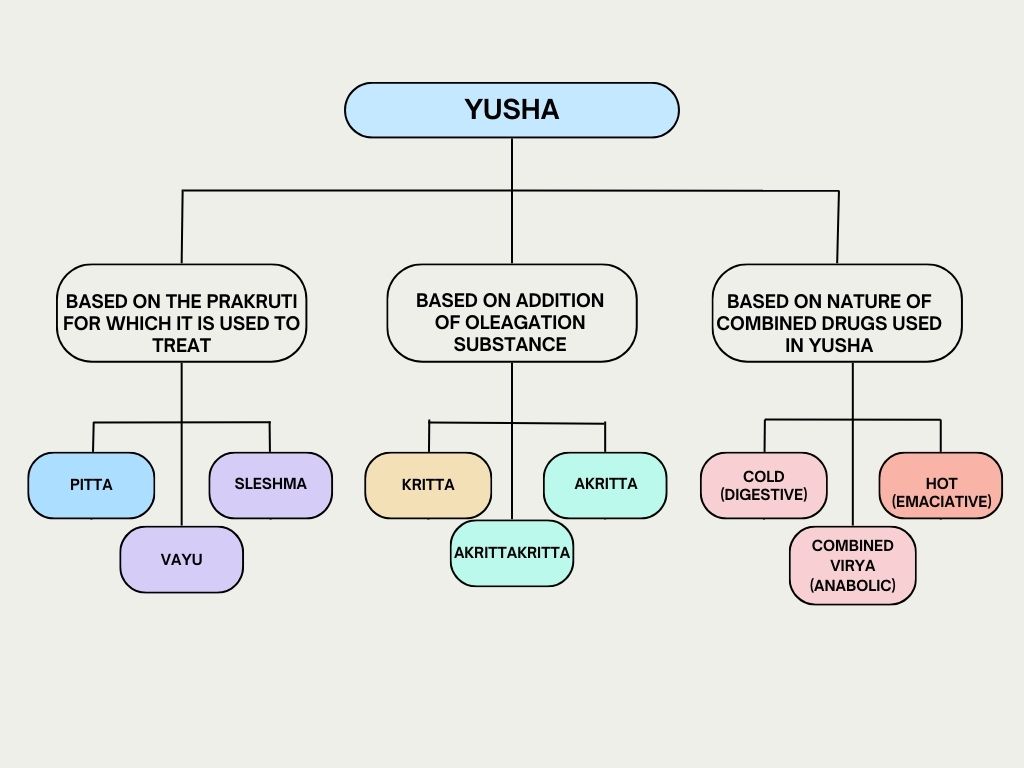 Fig. 3- Classification of Yusha based on nature and functional attributes
Fig. 3- Classification of Yusha based on nature and functional attributes
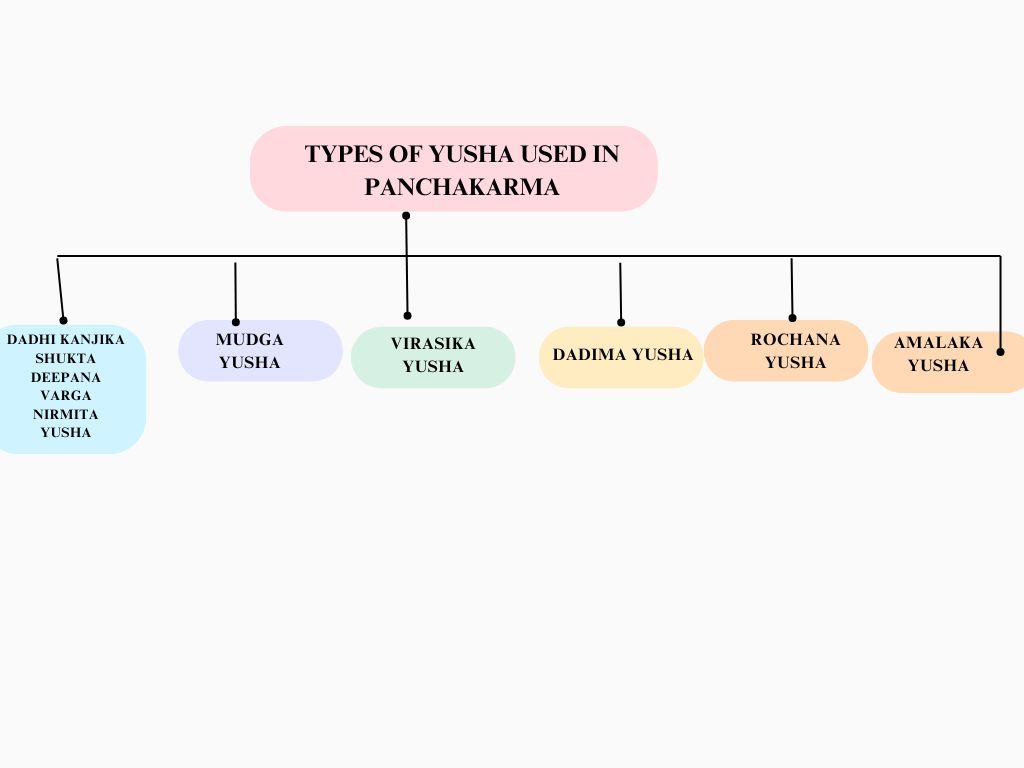 Fig. 4 Types of Yusha used in Panchakarma
Fig. 4 Types of Yusha used in Panchakarma
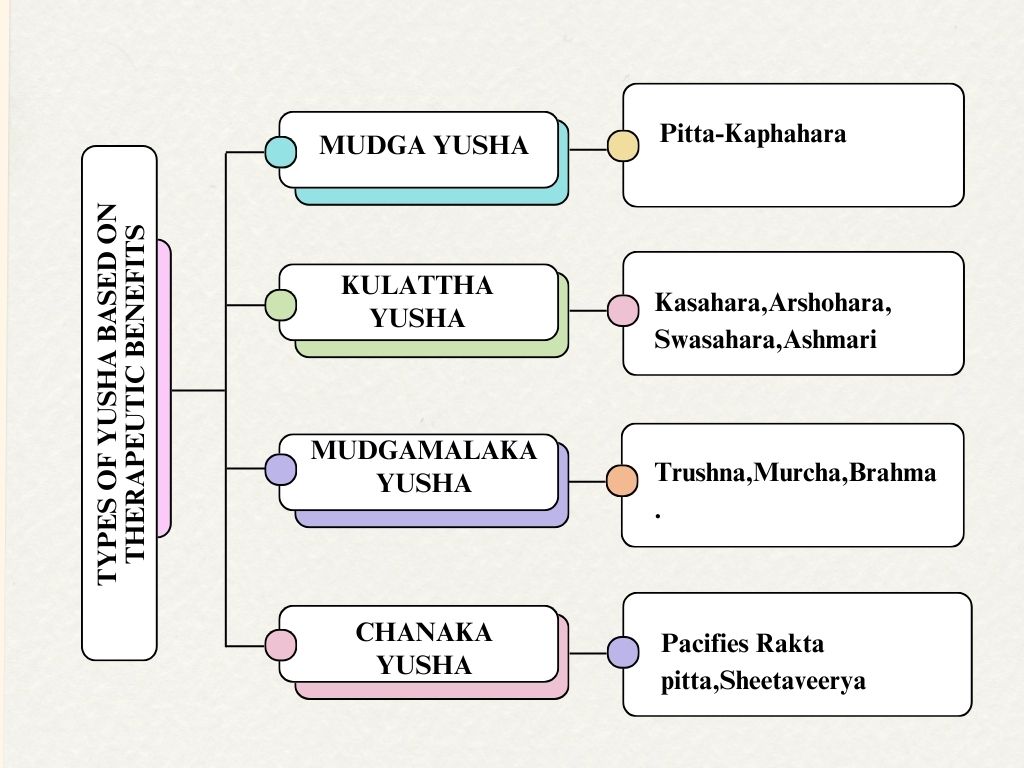 Fig. 5- Classification of Yusha based on their therapeutic benefits
Fig. 5- Classification of Yusha based on their therapeutic benefits
There are twenty five different types of Yusha depending on the nature of ingredient used in the preparation.
TABLE III
Classification of Yusha on the main ingredient used in preparation
|
Sl. No. |
Type of Yusha |
Main ingredient used |
|
|
Mudga yusha |
Green gram(Vigna radiata) |
|
|
Dadima yusha |
Pomegranate(Punica granatum) |
|
|
Kulatha yusha |
Horse gram(Macrotyloma uniflorum) |
|
|
Phala yusha |
Selected fruits |
|
|
Valka yusha |
Tree bark |
|
|
Rasna yusha |
Aromatic herbs |
|
|
Mulaka yusha |
Radish (Raphanus sativus) |
|
|
Guda-Kambalika yusha |
Jaggery |
|
|
Vastuka shaka yusha |
Amaranth |
|
|
Virasika yusha |
Green gram |
|
|
Citraka yusha |
Plumbago zeylanica |
|
|
Dhanya yusha |
Whole grain |
|
|
Pushpa yusha |
Selected flowers |
|
|
Pallava yusha |
Tender leaves |
|
|
Masura yusha |
Red lentil (Lens culinaris) |
|
|
Punarnava yusha |
Boerhavia diffusa |
|
|
Trikatu yusha |
Long pepper(Piper longum), black pepper(Piper nigrum), and ginger(Zingiber officinale) |
|
|
Amalaki yusha |
Indian gooseberry(Phyllanthus emblica) |
|
|
Pancha kola Yuktha sangrahi yusha |
Pippali(Piper longum), Pippalimula, Chavya(Piper retrofractum), Chitraka(Plumbago zeylanica), Shunthi(Zingiber officinale) |
|
|
Panca kola yukta dipana yusha |
Pippali, Pippalimula, Chavya, Chitraka, Shunthi |
|
|
Patra yusha |
Selected leaves |
|
|
Maha yusha |
Radish leaves and long pepper |
|
|
Changeri yusha |
Oxalis corniculata |
|
|
Atibala yusha |
Abutilon indicum |
|
|
Lasuna yusha |
Garlic(Allium sativum) |
Other types of Yusha include
- Kambalika- A khada yusha cooked well is Kambalika which is a preparation of Samidhanya in thakra(Buttermilk) Both these are hrudya and vata kapha hitha. Kashyapa mentions kambalika as a prepartion of Rohithaki matsya(a kind of Fish)
- Dadimamla- the yusha which is made sour by adding Daadima(Pomegranate) is Dadimamla
- Thakramla - The Yusha prepared by adding Takra is called Takramla. It is different from Khada because Khada is cooked in buttermilk whereas in Takramla, buttermilk is added to the preparation
A. Properties of Yusha
Based on its qualities, Yusha is believed to inhibit a variety of ailments, according to several Ayurvedic literature. In addition to improving voice, complexion, strength, and taste perception, the various varieties of Yusha can also serve as appetisers, aphrodisiacs, and aid in appropriate digestion and metabolism. Apart from this, consumption of Yusha can provide joy, sustenance, and contentment. By normalising the unctuous and hot nature of Vata, the unctuous and astringent nature of Pitta, and the heated and drug-treated nature of Kapha, Yusha can help in balancing all these Tridoshas.[9] The various forms of Yusha, their preparation process, and their therapeutic qualities are compiled in Table No. 3 based on the Kashyapa Samhita.
TABLE IIIII
Therapeutic properties of different types of Yusha
|
Sl. No. |
Type of Yusha |
Ingredients |
Method of preparation/ consistency |
Therapeutic properties |
|
1. |
Chitraka Yusha |
Stem and leaves of Plumbago zeylanica |
Decoction |
Grahani, colic, spleen, piles, Gulma, Kushta, cardiac disorders and suppresses Kapha and Vata
|
|
2. |
Panchakola Yusha |
Sati (Hedychium spicatum) Karkataki (Edible crab) Bilva (Aegle marmolos) Ajashringi (Pistacia integerrina) Paushkara (Inula recemosa) Dhataki (Woodfordia fruiticosa) Fruits of Punica granata Changeri (Oxalis cornjculata) Samanga (Rubia cordifolia)
|
Decoction |
Deepana (carminative) & pachana (digestive). |
|
3 |
Dhanya yusha
|
Pomegranate(Punica granata) |
Decoction of intact grains all in equal quantity except black gram, Sesamum indicum, Dolichos lablab, Brassica campestris
|
Digestive |
|
4 |
Dadimanda
|
Curd or buttermilk
|
The supernatant water of curd or buttermilk mixed with sesamum indicum and vigna mungo |
Head, ears, eyes, cardiac diseases, hemicrania, anorexia
|
|
5 |
Kulattha yusha
|
Horsegram(Macrotyloma uniflorum)
|
Decoction
|
Sannipata Vayu Kapha |
|
6 |
Phala yusha
|
Unripe fruits of Kapittha (Limonia acidissima) Bilva (Aegle marmelos) Badara (Zizyphus sativa) Dadima (Punica granata) Chuta (Mangifera indica) |
Decoction
|
Chronic diarrhoea
|
|
7 |
Pushpa yusha
|
Flowers of Sana (Cassia augustifolia) Shamali (Shamalia malabarica) Dhataki (Woodfordia fruiticosa) Padma (Nelumbo nucifera) Saugandhika (Hedychium coronarium) Kovidara (Bauhinia Verigata) Karbudar ( variety of Nelumbo) |
All flowers cooked with Punica granata without using oil
|
Asrigadara, Raktapitta, burning sensation and diseases of abdomen and eyes
|
|
8 |
Patra yusha
|
Leaves of Bilva (Aegle marmolos) Shobhanjana (Moringa oleifera) Eranda (Ricinus communis) Bala (Sida Cordifolia) Rasna (Plucea Lanceolata) Aamra (Mangifera indica) with water |
Decoction
|
Eradicates Vata
|
|
9 |
Valkala yusha
|
Bark of Dadima (Punica granata) Aamra (Mangifera indica) Jambu (Syzygium cumini) Chirbilva (Aegle marmolos) with Dadima-Manda (curd water) |
Decoction |
Diarrhoea |
|
10 |
Pallava yusha |
Tender leaves of Nyagrodha(Ficus benghalensis) Udumbara (Ficus racemosa) Ashwatha (Ficus religiosa) Plaksha (Ficus microcarpa) Palasha (Butea monosperma) Kamala (Nelumbo nucifera) Ghrita (Ghee) Dadima (Punica granata) |
Decoction |
Pitta, abortion, burning sensation and Katukini |
B. Traditional Methods of Yusha preparation
The preparation of Yusha has been thoroughly described in several Ayurvedic scripts. However, there are differences in the ingredients used, cooking duration, and ratio of pulses to water. Jala, kwatha, swarasa,hima or takradi drava, and oushadhi dravya are the ingredients that make up Yusha. It is known as Yusha Kalpa and should be added along with mudga, masoora, etc. According to Kashyapa Samhita, the foundation of Yusha is liquid. Acharya Sharangadhara defines the Yusha recipe as- One pala(a measure) of dravya (such as Kulatha or mudga) combined with half karsha of shunthi(dry ginger) and pippali churna, and then boiled in one prastha, or sixteen times water. However, according to the writings of Bhavaprakasha and Kaideva Nighantu, Yusha is made by cooking one part Shimbidhanya in eighteen parts water and the preparation is liquid in consistency.
According to Acharya Kashyapa, there are various forms of Yusha Kalpana, including Soopa, Khada, Kambalika, Dali, and Dhana. Susrutha lists three distinct Yusha preparations: Dadyamla, Takramla, and Dadimamla. Dali is regarded as a Yusha variety as well. It is made with water-cooked Sami Dhanya that has been samskara with asafoetida, ginger, and salt. [10]
C. Components of Yusha
Though pulses are the base ingredient in preparation of Yusha, different other herbs and spices are used in producing different types of Yusha for treatment of a variety of diseases. Table No. 4 summarizes the different types of Yusha, the ingredients and their scientific names.
TABLE IVV
major components in different types of Yusha preparation
|
Sl. No |
Type of Yusha |
Ingredients (Sanskrit name) |
Scientific name |
|
1 |
Mudga Yusha |
Mudga Jala Dadima Saindhava Shunti Dhanyaka Pippali Jeeraka |
Vigna radiata water Punica granatum Rock salt Zingiber officinale Coriandrum sativum Piper logum Cuminum cyminum |
|
2 |
Masuradi Yusha |
Masura Mudga Godhuma Kulattha Lavana |
Lens culinaris Vigna radiata Triticum aestivum Macrotyloma uniflorum Salt |
|
3 |
Mrudvika Yusha |
Panchalavana |
5 types of salt Dry grapes |
III. THERAPEUTIC SIGNIFICANCE OF SOME OF THE MAJOR COMPONENTS OF YUSHA
A. Amla (Indian gooseberry)
The Indian gooseberry, or Phyllanthus emblica L., is well-known for its abundant phytochemical makeup and possible health advantages. The direct prevention of oxidative processes and the development of an endogenous antioxidant defence system are supported by scientific evidences, making it a significant characteristic antioxidant. The polyphenols might serve as a supplementary supply of active substances to boost well-being and strengthen defences against illness development. According to scientific data, polyphenols and vitamin C are essential components of fruits and other parts of the Amla tree. [11]In addition to significant in vivo benefits, such as enhanced antioxidant status and activity of the endogenous antioxidant defence system, the rich composition of polyphenol and vitamin C confers added health advantages. Additional possible therapeutic benefits include anti-hyperlipidemic and antidiabetic activities as well as the anticancer, anti-inflammatory, digestive tract and neurological protective activities. [12]
B. Kulattha (Horsegram)
The Charaka Samhita states that the seeds of Kulattha, or Macrotyloma uniflorum, are beneficial for treating respiratory disorders, piles, hiccups, abdominal lumps, and sweating. The Sushruta Samhita mentions that the seed powder helps prevent excessive sweating. Additionally, horsegram seeds as extracts have effective hypolipidaemic and hypoglycaemic properties and have been used from time immemorial to treat kidney stones, piles, urinary problems, acid peptic disorder (gastritis), constipation, heat stroke, rheumatoid arthritis, bleeding disorders, intestinal worms, bronchitis, leucoderma, asthma, inflamed joints, fever, musculoskeletal disorders, breast milk purifiers, sinus wounds, tumours, pathology, localised gastric tumours, and a variety of feminine issues like leucorrhea, menstrual issues, maternity haemorrhage, and excessive discharges after giving birth.[13] Natural phenols, primarily flavonoids, phenolic acids, and the main antioxidants, are abundant in horse gram seeds. Horsegram has a high protein content (22-24%). Carbohydrates (57.2%), fat (1.1%), vitamins, minerals (3.2%), and a healthy quantity of soluble fibres are all present in the seeds. The seed extract has strong anti-adipogenic, anti-hyperglycemic, anti-hypercholestemic, and anti-oxidative stress properties in contrast to its flour, which has 16.3% total dietary fibre (14.9% insoluble, 1.4% soluble, and 2.2% resistant starch), it has 28.8% total dietary fibre, primarily 27.82% insoluble dietary fibre (IDF) and 1.13% soluble dietary fibre (SDF). For the human lower intestine to operate normally, insoluble dietary fibre is very much necessary. [14]
C. Mudga (Green gram)
One of the most widely used ingredients in Indian cooking is mudga, also known as Vigna radiata, which is regarded by Ayurveda as the best of the Shimbidhanyas (legumes).Green gram has a high nutritional value and is a good source of protein (24.5) and carbohydrates (59.9). It is a good source of minerals such as Potassium (1150 mg), Sodium (27), Magnesium (112 mg), Calcium (75 mg), Phosphorus (405 mg), and Iron (3.9 mg), and 100 g of it provides 348 kcal of calories. Green gram also contain ascorbic acid, folic acid, riboflavin (0.21 mg), thiamine (0.47 mg), niacin (2.4 mg), and carotene. Arginine, Lysine, Phenylalanine, Histidine, Leucine, Isoleucine, Valine, Tryptophan, Cystine, and Methionine are among the other important amino acids it contains.[9] In developing nations, greengram contributes a substantial proportion of dietary iron to plant-based diets. According to the classics, Vigna radiata has health-promoting properties that are supported by certain chemical components, including flavanoids (flavones, isoflavones, and isoflavonoids), phenolic acids (gallic acid, vanillic acid, caffeineic acid, cinnamic acid, protocatechuic acid, shikimic acid, p-hydroxybenzoic acid, etc.), and organic acids that have recently been isolated from the plant.[15] Consuming greengram on a regular basis can prevent cancer, lower the risk of coronary heart disease and hypercholesterolaemia, normalise the enterobacteria flora and minimise the absorption of hazardous compounds. Greengram protein isolates have been demonstrated to improve the lipid profile by restoring normal insulin sensitivity and, in particular, lowering plasma triglyceride levels. Studies have demonstrated that greengram extract inhibits the autophagic HMGB1 degradation that causes fatal sepsis.[16] Greengram soup can provide protection against heat stress injuries since it is high in vitexin and isovitexin. Findings have shown that greengram soup can serve other purposes in preventing heat-related injuries.[17]
D. Mulaka (Radish)
Many traditional foods use the herb Raphanus sativus, known as Mulaka in Sanskrit, as a home remedy for a variety of illnesses and as a well-known nutritional supplement.[18] It is a multipurpose medicinal plant with a unique supply of different kinds of chemical compounds that have a wide range of possible uses. While Raphanus sativus is rarely used as the primary curative medication in Ayurvedic literature, it is frequently mentioned as a pathya, food supplement, and in conjunction with other medications to treat a variety of illnesses.Radish is mostly described as a vegetable in the majority of Ayurvedic texts. It is mentioned in Jvara (fever), Kasa (cough), Nasaroga (disorders of the nose), Netra roga (disorders of the eyes), Arsa (piles), and Gulma (a bulge in the abdomen). Mulaka yusha (radish soup) is quite beneficial for Atisara (diarrhoea), and sankha (conch) paste is combined with radish ash and applied topically for Arbuda (tumour). [19]
Numerous significant phytochemicals found in radish have also been linked to liver detoxification, renal detoxification, and damage repair, according to recent studies. Antioxidants and minerals like calcium and potassium, which help lower blood pressure and minimise the risk of heart disease, are also abundant in it. Additionally, it contains natural nitrates that enhance blood flow. Rich in magnesium, vitamin C, and vitamin K, radish leaves may aid prevent memory loss and shield lung tissues from oxidative stress and damage. Radish leaves' antimicrobial and antioxidant qualities aid in the removal of toxins, blood purification, and the maintenance of healthy liver and kidneys. Radish has a sweet, pungent, and with a lot of juice followed with fibre content and is thus used in the treatment of constipation and piles.
Conclusion
Ayurveda\'s Aahara Kalpana is the most recommended choice will help in making wholesome dietary choices that are both nourishing and healing. Yusha is one of themany Ayurvedic food preparations that have been used in traditional medicine to cure a variety of ailments. Healthy individuals can also use it to improve their ability to prevent sickness. Yusha can be incorporated into a daily food plan and is a very simple version of Ahara kalpana to be followed. For all age groups and individuals with unique physiological needs, it might be regarded as the most ideal diet. It can serve as a health-promoting agent by being utilised as a diet therapy for patients receiving various other treatments. Since Yusha is made with basic materials like lentils and a watery base, it is very easily digested and can therefore be used with other herbs to provide a variety of therapeutic advantages. The majority of Yusha\'s ingredients are well-known for their nutraceutical qualities, which include weight loss, cardioprotection, anti-inflammatory, carminative, and antioxidant effects. Therefore, it is very much necessary to make this ancient meal preparation more popular among public by standardising and simplifying the methods of Yusha preparation.
References
[1] Jaiswal, Y. S., & Williams, L. L. (2017). A glimpse of Ayurveda – The forgotten history and principles of Indian traditional medicine. Journal of Traditional and Complementary Medicine, 7(1), 50–53. https://doi.org/10.1016/j.jtcme.2016.02.002 [2] S, D., Sharma, M., & Hussain, G. (2022). A review on yusha in kaiyadeva nighantu. Journal of Biological & Scientific Opinion, 10(4), 49–51. https://doi.org/10.7897/2321-6328.104160 [3] Sharma MK, Nagar D. (2020). Conceptual study of diet and its importance in Ayurveda. WJPR. 10(1):1593-603. [4] Bishwal Radhakrishna, Dhanya T, Sanghamitra Samantara. (2018). Ayurvedic lifestyle to prevent diabetes mellitus. IJCRT. 6(1): 2320-2882 [5] Naik, B. R., Nagalapur, P. C., Karmudi, C. S., & Chavan, S. G. (2023). Ayurvedic recipes as nutritious pathya for children: A review. International Journal of Research in Ayurveda and Pharmacy, 127–130. https://doi.org/10.7897/2277-4343.140397 [6] Rajendra Garg, Gopesh Mngal, Minu Yadav & Dinesh Sharma. (2020) Pathya Aahara Kalpana: A Review. International Journal of Ayurveda. 33-41 [7] Poorvi S Athreya & Pradeep L Grampurohit. (2013). A critical review on samsarjana krama. Indian Journal of Ancient Medicine and Yoga. 6(3):123-128. [8] Marwaha Mannat, Chugh Deepa. Conceptual study of yusha (soups) as pathya ahara kalpana w.s.r. mudga yusha. (2017). Int J App Ayu Res. 3(4):736-45. https://ijaar.in/index.php/journal/article/view/48 [9] Das, A., & Das, D. K. (2020). Dietary and therapeutic effect of mudga [vigna radiata (L.) r. Wilczek]: A review. Journal of Pharmaceutical and Scientific Innovation, 9(4), 109–112. https://doi.org/10.7897/2277-4572.094179 [10] Menon, Sudeep & Naik, Ruturaj & Patwardhan, Ravindra & Joshi, Vivekanand & Sharma.(2022). A study on therapeutic effects of yusha kalpana. The journal of oriental research Madras. 93:25-50. [11] Gul, M., Liu, Z.-W., Iahtisham-Ul-Haq, Rabail, R., Faheem, F., Walayat, N., Nawaz, A., Shabbir, M. A., Munekata, P. E. S., Lorenzo, J. M., & Aadil, R. M. (2022). Functional and nutraceutical significance of amla (Phyllanthus emblica L.): A review. Antioxidants, 11(5), 816. https://doi.org/10.3390/antiox11050816 [12] Mutnuri, V. L. (2022a). Ayurveda implications of Nutraceuticals: Understating roles in preventive medicine. Journal of Ayurvedic and Herbal Medicine, 8(3), 192–196. https://doi.org/10.31254/jahm.2022.8310 [13] Rlds, R. (2017). Medicinal and nutritional values of Macrotyloma uniflorum (Lam.) verdc (Kulattha): A conceptual study. Global Journal of Pharmacy & Pharmaceutical Sciences, 1(2). https://doi.org/10.19080/GJPPS.2017.01.555559 [14] Rana S, Agnihotri V, Bhandari NS. (2023). Nutritional characteristics of horsegram (Macrotyloma uniflorum) and its value?added food products: A review. International Journal for Multidisciplinary Research. 5(2). [15] Tang D, Dong Y, Ren H, Li L, He C. (2014). A review of phytochemistry, metabolite changes, and medicinal uses of the common food mung bean and its sprouts (Vigna radiata). Chemistry Central Journal. 8:1-9. [16] Kavya N, Kavya B, Ramarao V, Kishore KR, Venkateshwarlu G. (2014) Nutritional and therapeutic uses of mudga [Vigna radiata (L.) R. Wilczek]: a potential interventional dietary component. IJRAP. 4(2): 238-241 [17] Cao, D., Li, H., Yi, J., Zhang, J., Che, H., Cao, J., Yang, L., Zhu, C., & Jiang, W. (2011). Antioxidant properties of the mung bean flavonoids on alleviating heat stress. PLoS ONE, 6(6), e21071. https://doi.org/10.1371/journal.pone.0021071 [18] Sony Upadhyay, Prashant Kumar Singh, Pranav Upadhyay and Rajiv Shukla. (2023). Etheno Medicinal Uses of Raphanus Sativus Linn. International Journal of Pharmaceutical research and Applications. 8(3):2395-2397 [19] Vishva Savaliya VS, Amit Patel AP, Nidhi Ranpariya NR, Mukesh Nariya MN. (2017). A critical review on Mulaka (Raphanus sativus Linn.) in context to ayurvedic literature. Pharma Science Monitor. 8(4): 248-261.
Copyright
Copyright © 2024 Pradeep S Kaushik, Kannamedi Arun Sharma, Jayashree N S. This is an open access article distributed under the Creative Commons Attribution License, which permits unrestricted use, distribution, and reproduction in any medium, provided the original work is properly cited.

Download Paper
Paper Id : IJRASET65525
Publish Date : 2024-11-25
ISSN : 2321-9653
Publisher Name : IJRASET
DOI Link : Click Here
 Submit Paper Online
Submit Paper Online

